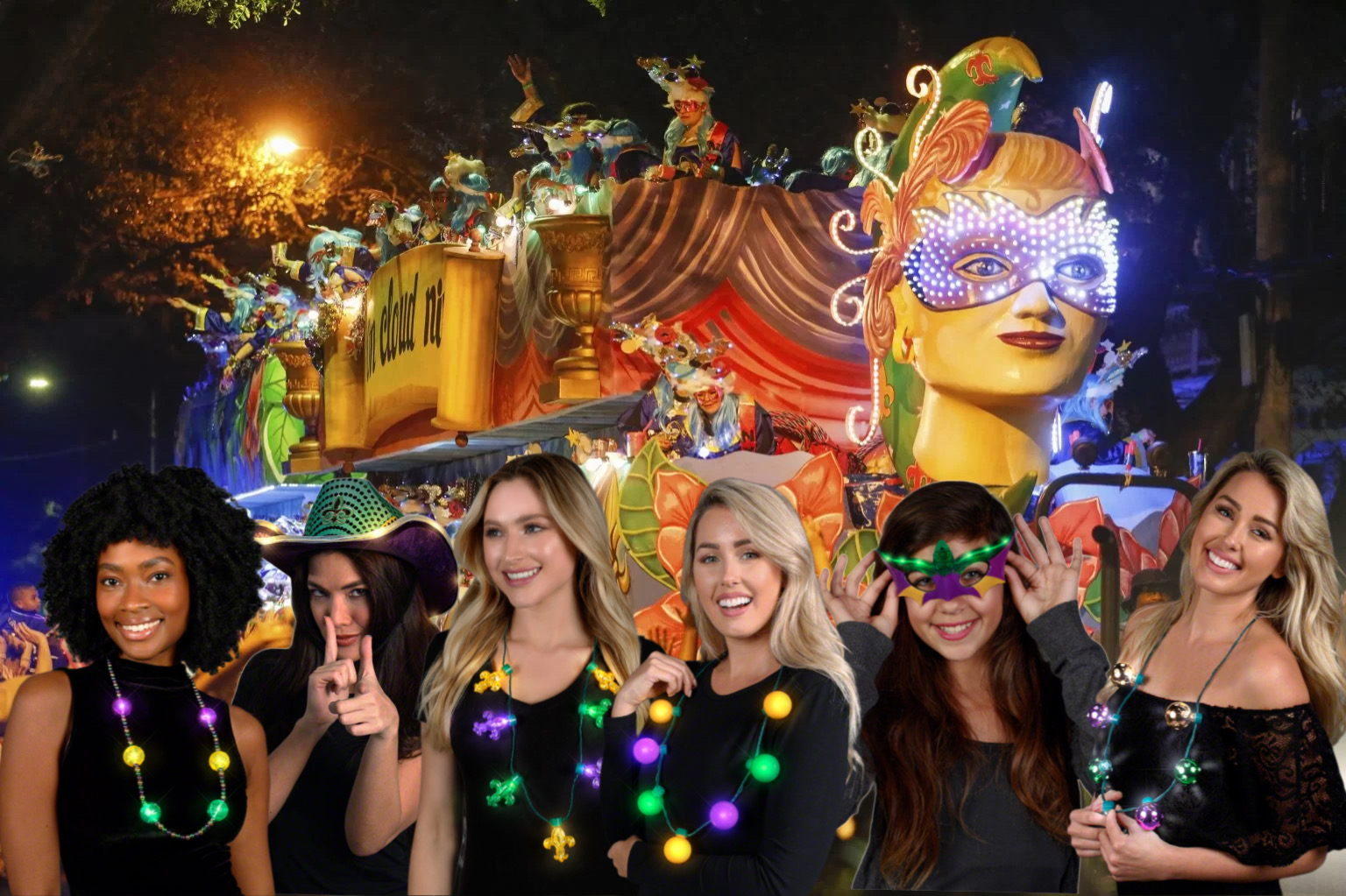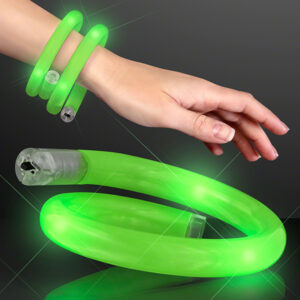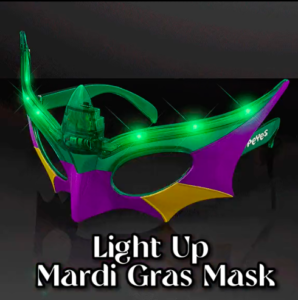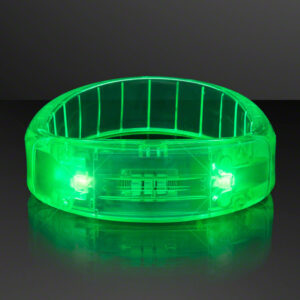One Beat, One Dance, One Mardi Gras!
A Force in Herstory
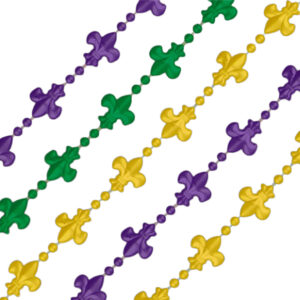
Mardi Gras, also known as Fat Tuesday, is a traditional celebration that occurs the day before Ash Wednesday, the first day of the Christian season of Lent. The celebration originated in medieval Europe and is known for its vibrant parades, colorful costumes, and festive atmosphere. One aspect of Mardi Gras that is often overlooked, however, is the history of beads and light-up accessories in the celebration. Beads have long been a staple of Mardi Gras celebrations, with people wearing them as necklaces, bracelets, and even headbands.
Influenced by Yesterday
The tradition of throwing beads from floats dates back to the early 20th century when floats were first introduced to Mardi Gras parades. The tradition likely originated as a way to entice people to come to watch the parades, as the floats were often accompanied by live music and other entertainment. The first Mardi Gras beads were made of glass and were often imported from Europe. These beads were expensive and difficult to produce, making them a rarity at Mardi Gras celebrations. In the 1920s, however, the invention of plastic revolutionized the production of beads, making them much cheaper and more readily available.
At Present of Strength
Today, Mardi Gras beads are made of various materials, including plastic, acrylic, and even metal. In addition to beads, light-up accessories have also become a popular addition to Mardi Gras celebrations in recent years.

These Accessories, which include items such as glow sticks, light up necklaces, and LED wristbands, add an extra level of excitement and flair to the festivities. Like beads, light up accessories are often thrown from floats during parades, adding to the excitement and energy of the celebration. The use of light up accessories at Mardi Gras can be traced back to the 1970s, when glow sticks first became popular. These chemical light sources, which were invented in the 1960s, quickly gained popularity as a cheap and easy way to add light to any occasion. Today, light up accessories have become an integral part of Mardi Gras celebrations, with people of all ages enjoying the added touch of whimsy and fun that they bring. In conclusion, the history of beads and light up accessories at Mardi Gras is a long and storied one.
The Future Continues to Unfold
From the early days of glass beads to the modern era of plastic and LED lighting, these accessories have played a crucial role in the celebration's vibrant atmosphere and festive spirit. Whether worn as a necklace or thrown from a float, beads and light up accessories continue to be an integral part of the Mardi Gras experience.
